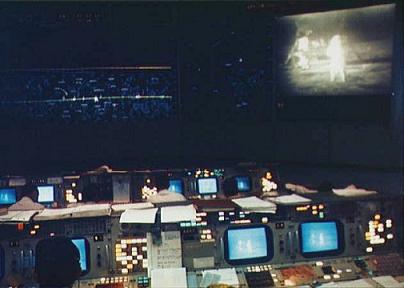Description of the euphoria after the first landing. Article from "Science", a scientific newspaper for each volume, 1969-1970, No. 1

One of the first results of the successful completion of the "Apollo" operation will surely be the securing of a large budget for sending a man to Mars. After the resounding success of the man's landing on the moon, there is almost no doubt that both the Congress and the American government will support a long-term plan to send a man to the planets. Indeed, the director of the American space agency, Dr. Thomas Paine, has already said that the real goal of the "Apollo" missions was to "develop the possibility of interstellar flight and demonstration". The amounts required are large. The "Apollo" operation cost about 24 billion dollars. A similar operation to Mars, for example, should cost about 80 billion.
While our attention is entirely given to the great achievements of the conquest of the moon by man, the other space programs, which are many and varied, have been forgotten. On February 24 and March 24 of this year, two "Mariner" spacecraft were launched to Mars, for a five-month mission, to photograph and investigate, with various instruments, but the general commotion surrounding the "Apollo" operations pushed this news to the corner. Unjustly. It turns out that Mars is probably the immediate goal of the American research efforts in space and there is almost no doubt that the achievements that will be achieved during its research will overshadow everything that has been done on the white. The goals of the spacecraft's launches: to explore the surface of Mars and its atmosphere, in order to create a basis for future experiments, in the field of the search for extraterrestrial life; and to develop technology, which will enable missions that include the launch of spacecraft, which will orbit near Mars, or land on its surface.
The two spacecraft - "Mariner-6" and "Mariner-7" are similar to each other. The weight of each is about 004 kg. They were launched with launch missiles of the "Atlas-Centaur" type. "Mariner-6" will approach to a distance of about 3,200 km from the face of Mars on July 31, but will start broadcasting TV broadcasts already on the 29th; "Mariner-7" will approach, to a similar distance, on August 5. The two spacecraft will broadcast television images of the surface of Mars, while flying near it, from heights between 10,000 and close to 3,000 km from its surface.
The orbits of the spacecraft were designed so that "Mariner-6" will photograph the equatorial region of Mars, while "Mariner-7" will photograph its south pole region. Two cameras in each spacecraft will operate alternately, in order to photograph small and large areas on Mars, with greater or lesser separation; On top of the cameras there are filters, whose function is to show the color changes in different details on the surface of Mars.
An infrared spectrometer, installed in each of the spacecraft, will check if there is evidence of the existence of molecules in the lower atmosphere of Mars, which have significance in biochemical processes; An ultraviolet spectrometer will identify the components of the upper atmosphere; An infrared radiometer will measure the temperatures on the surface of Mars; Another device will check the deviation of the radio signals sent from the spacecraft, during their passage from the other side of Mars; The tracking data of the spacecraft will be used to determine the mass of the planet, to determine the ratio between the mass of the Earth and that of the Moon, and to determine the exact distance between the Earth and Mars, the data will also be used to more accurately determine the astronomical unit (equal to the average radius of the orbit of the earth around the sun).
We stand, therefore, on the brink of much bigger and bolder leaps into the expanses of the solar system than the "leap" to the moon.
